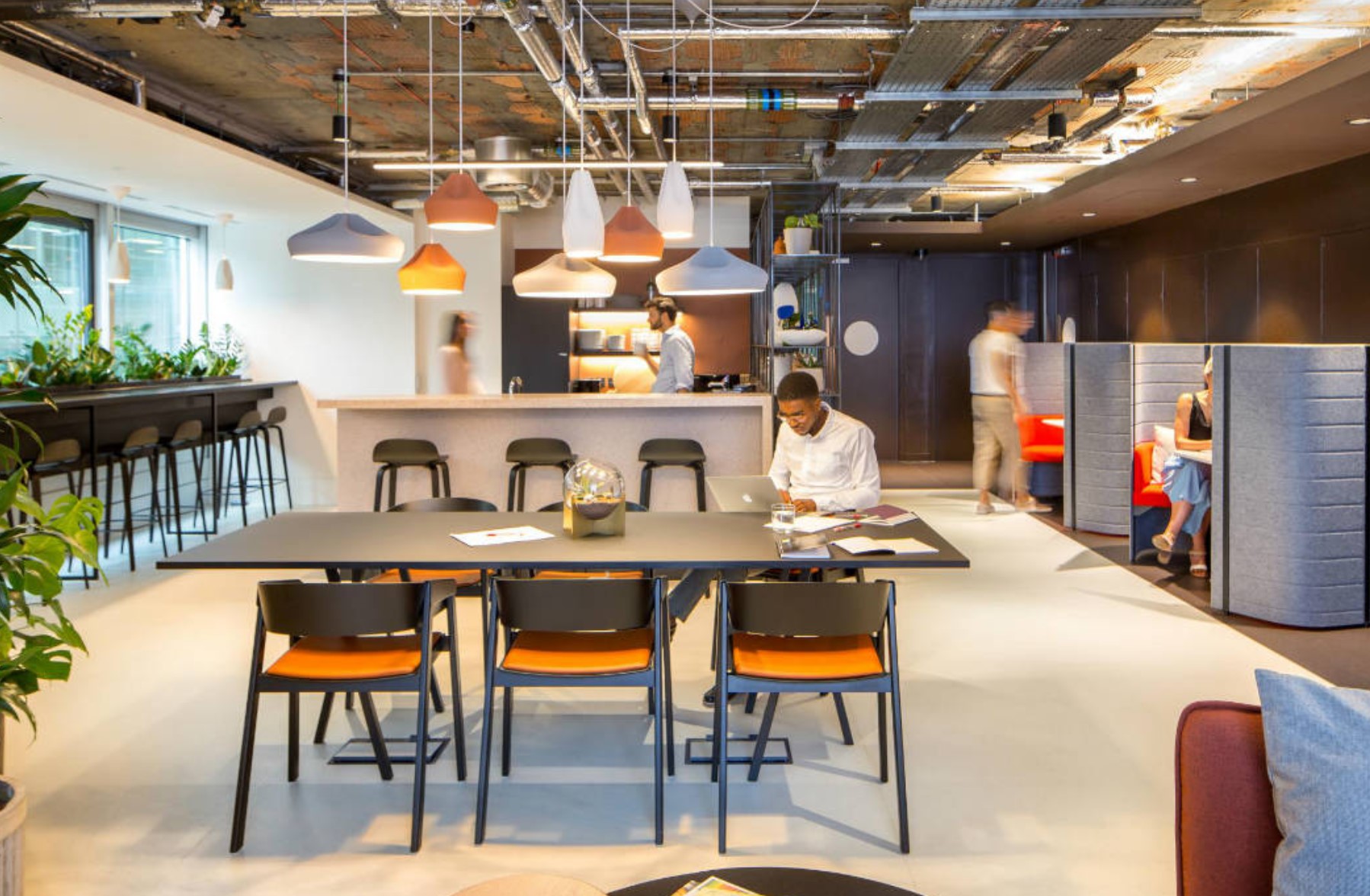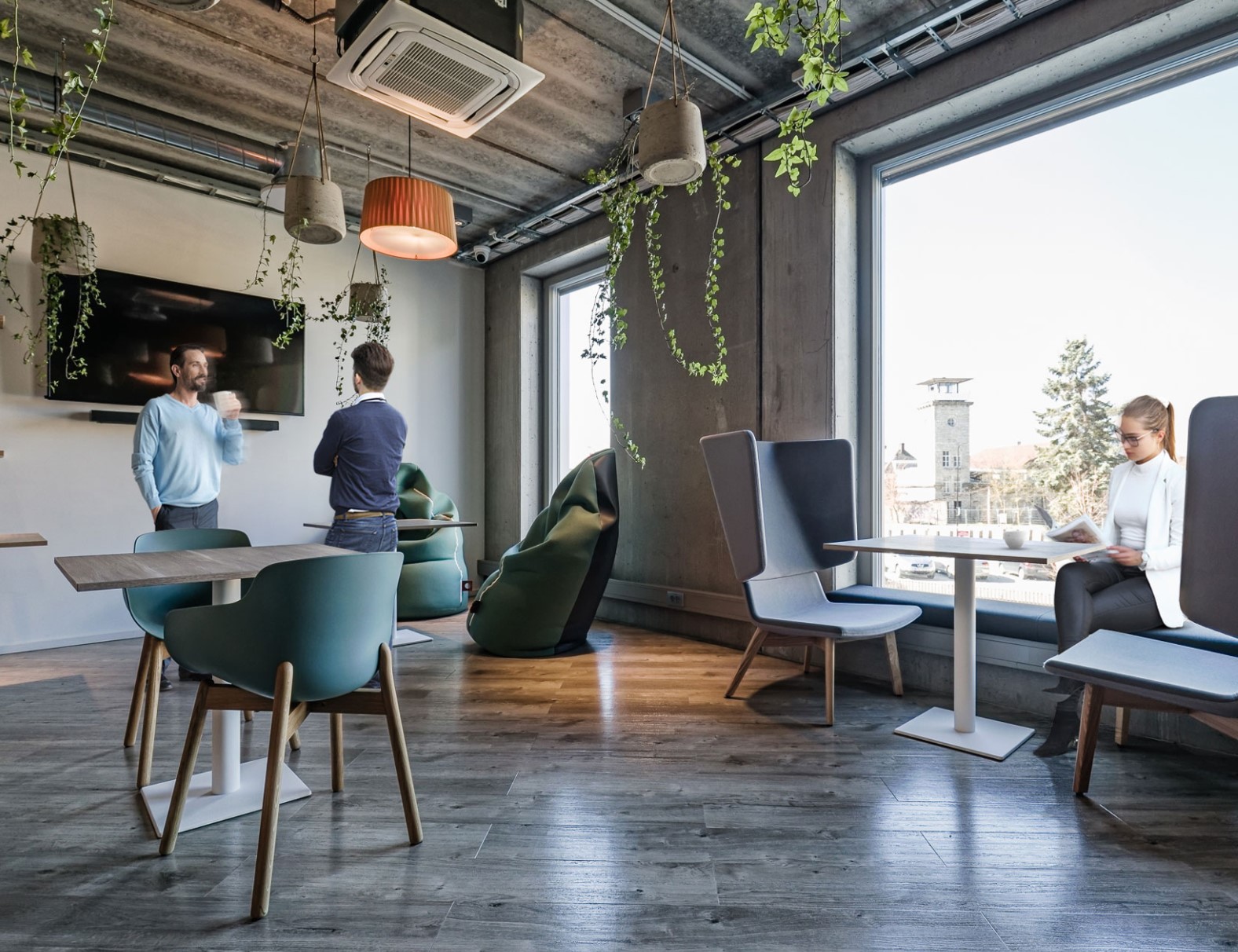There's been an ongoing debate about open plan offices, mostly about how bad these work environments are and how they don't work. The earliest modern offices were regimented with managers observing office workers sitting in rows of desks and ensuring maximum productivity. The lack of human and social elements to this method of working should be obvious. Today the open-plan environment may look brighter and technology can, of course, improve efficiency and communication, although there's clearly something going very wrong based on research into this trend of open-plan offices.
Let's Do The Math
The greatest business cost is staff. The second is property costs with the majority of organisations paying between £75-200 per sq ft occupancy costs. Based on a company with 100 employees requiring, say, 10,000 sq ft of space, the total property costs could easily total £2 million per annum or £166,000 per month. Apply the sums for your own workspace and you'll realise that switching to an open-plan format could save, say, 25%, that results in a £500,000 saving that can be reinvested in hiring/retaining talent, etc. This was the trend for Facility Managers and Property Directors during the past decade.

The Cost of Open-Plan Environment
Research is clearly showing a dissatisfaction from many employees about such an environment which often fuels noise pollution and social disturbance. So much so that it has been reported that every interruption can take between 15-25 minutes for a worker to re-focus and get back in their 'zone'. Accumulate that by 100 employees over the course of any given week and suddenly the lost productivity can result in significant lost revenue - potentially hundreds of thousands of pounds. That is not to mention how noise impacts well-being in the workspace, which can cause low productivity andabsenteeism, again seriously hurting the bottom line and other outputs.
What Your Employees Actually Want
There are clear benefits to being open-plan, although solutions must be implemented to tackle noise and disturbance issues. The truth is that being 'open-plan' is more than just tearing down walls. Research shows that employees want flexibility as to how they use their workspace, aka agility, another buzz word in the industry. However, agility doesn't come in aone-size-fits-all package when designing an office. It's personal. Employees are people who have opinions, which is oftendisregarded when senior managers decide what they want from a newly designed office environment.
It's about striking the balance between open-plan and alternative functional spaces, like quiet booths, social areas and collaboration zones, to provide employees different ways of working depending on what they need at the time. The right tools and technology need to be in place to set the stage for the proper type of interaction. People don't just collaborate if you put a few chairs in an open area. Certain departments or teams may benefit from specific acoustic or furniture solutionsthat will improve their productivity and collaboration, as opposed to the cost to the organisation if the space fails to beutilised adequately.
How Can You Test and Measure Your Employee's Needs?
There are a lot of bad open-plan work environments that were not given the necessary planning and thought required. Many started off to reduce the property costs but were often blind to the subtler functions necessary for a healthy and productive office. In other words, ignoring the end-user in the workspace: the employees and other stakeholders.
It's about the details and nuances necessary to get work done and achieve company goals. Paying attention to that willensure the physical workspace is a success.
Observing how organisations use the office, coupled with online surveys and workshops have been the traditional method to identify the best way to design an office. The issue is that such information is limited and is no longer achieving theoptimum workplace strategy. Our technology captures
granular data from employees (anonymously) that reflects the activity-based working, well-being and occupancy challenges for any size client who seriously wants to achieve a better performing workspace environment.

Implementing Open-Plan
- Leadership behaviour - Leaders must set an example for new workplace practices for it to be more widely acceptedby employees.
- Performance management - Managers should be help accountable for their employee's successful adoption of new ways of working through performance management analysis.
- Autonomy and authority - The workforce must be given the autonomy and authority necessary to function in anenvironment where they can choose from a variety of work settings.
- Reward and consequences - Flexible working is not a reward to employees, it is a way to ensure optimal performance; resistance managers could face the consequences of employees moving to different departments, or worse still, tocompetitors, if they do not adopt agile working practices.
- Technology-Technology must be available and reliable to enable employee productivity; people working in open-plan environments or co-working spaces also need to be educated on cyber privacy and security risks.
- Culture - Change in environment usually leads to a change in culture; employees should be involved in change toimprove their engagement in the process.
Change Management
A shift in working behaviours cannot be expected simply because your company is investing serious money to fit-out the workspace. Your people, no matter of their position in your company, are used to a certain way of working or may have been needing something more from the working environment that they can now utilise, but it takes time to adapt and learn tooptimise the newly available tools.
A change management programme can support your workplace objectives and foster a culture of collaboration andproductivity for the long-term. It's like glue, holding together the space, technology, working practices, processes and behaviours all co-ordinated so that they all harmonise to create a new positive experience for everyone.
Make it Personal
Every organisation has their own culture and behaviour embedded into their framework and people. In order to break selected patterns and foster beneficial aspects, behavioural change management techniques will have to be applied tomaximise employee productivity and workspace performance.
Before this stage, however, is a wake-up call that just like the open-plan environment of the 1930's didn't work foremployees, a similarly designed office-space may reduce property costs, but there is a significant knock-on effect to organisational outputs; employees want more from their working environments that will ultimately increase their individualand collective productivity, improve well-being, and drive organisational performance.
A science-based workplace strategy supported by affordable technology can deliver your business the hard-data that isrequired to know exactly how to design your offices without second guessing.